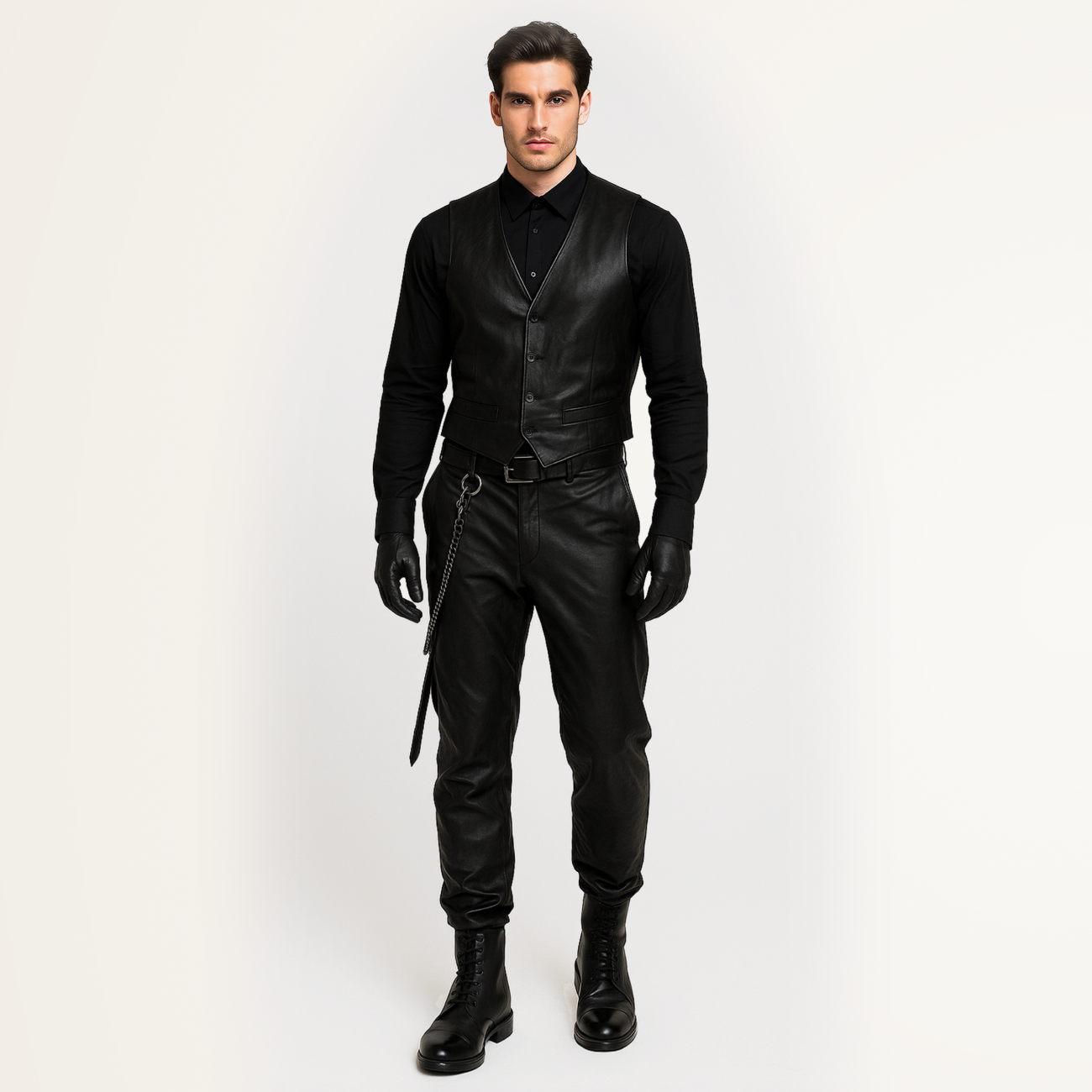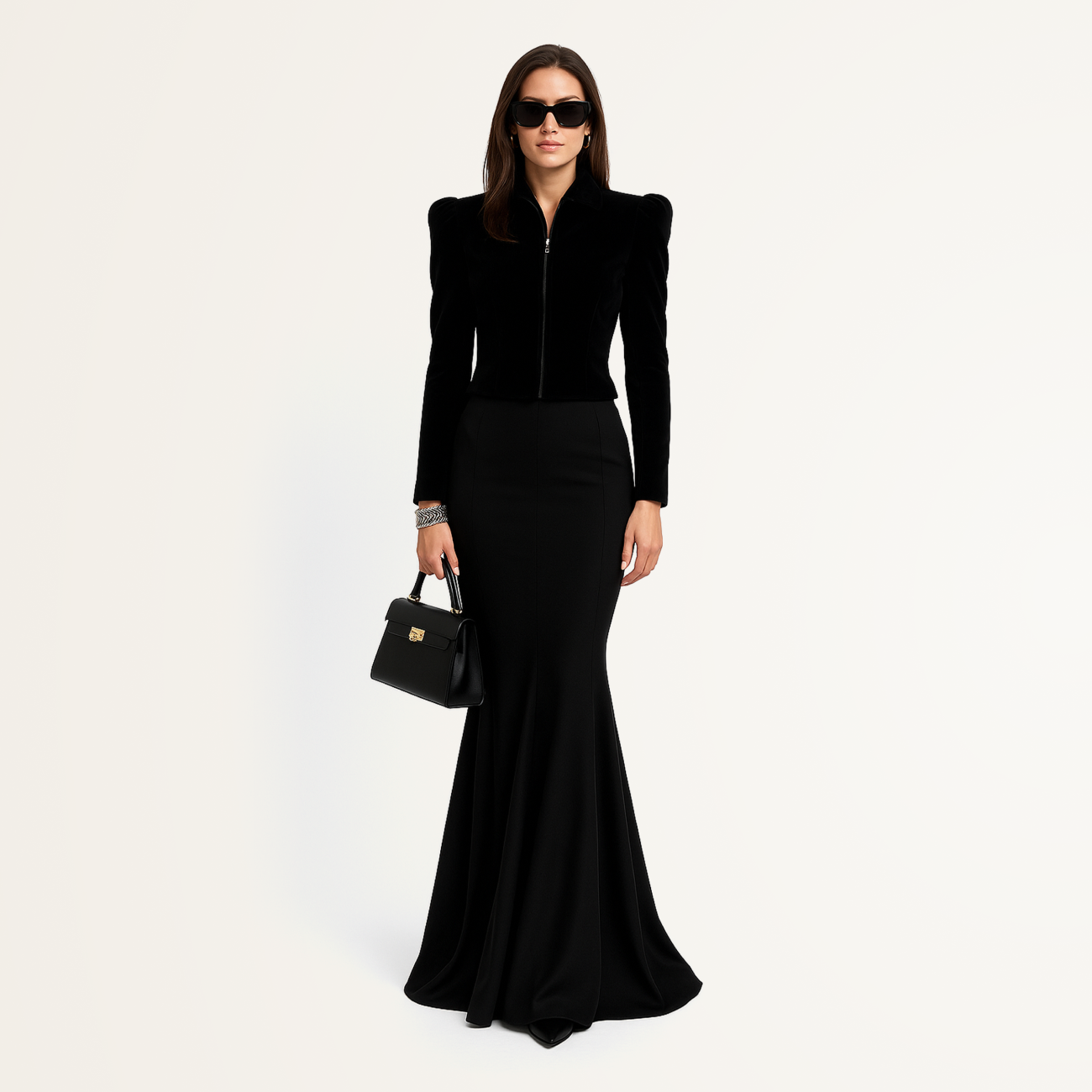Drama
Dramatic style is the choice of individuals who value power and mystery, seeking to make a bold impression and emphasize their presence in any space. Its philosophy lies in expressing inner strength through visual elements that feel assertive—sometimes even provocative. This is a style for those unafraid of attention, ready to use fashion as a tool of individuality, unshaken by the ordinary. Dramatic style makes a statement from the very first moment—it's a fashion armor concealing a powerful, extraordinary personality.
History
In the early 20th century, fashion underwent significant changes. Influenced by modernism and the rise of avant-garde movements, the first foundations of the dramatic style began to emerge. Designers such as Paul Poiret rejected corsets and classical silhouettes, introducing looks that emphasized independence and individuality. At the same time, the Art Deco style—with its graphic lines and luxurious fabrics—infused fashion with glamour and drama, forming the basis for future development of the style. In the 1920s, geometric shapes and extravagant accessories began to be used to create bold and memorable looks.
The 1970s marked a key turning point for dramatic style, as fashion became more theatrical and provocative. Influenced by disco culture, underground subcultures, and the popularization of glam rock (championed by stars such as David Bowie and Mick Jagger), the era gave rise to eccentric looks, bold makeup, and oversized accessories. Platform shoes, leather garments, metallic accents, and rich dark tones became defining features. Glam rock brought elements of rebellion and visibility into the dramatic style, which still resonate today.
In the 1980s, dramatic style reached its peak, particularly in business fashion. Economic growth and the rising number of women in business gave birth to “Power Dressing,” reflected in suits with wide shoulders, structured lines, and bold, deep colors. During this time, brands like Yves Saint Laurent and Thierry Mugler popularized dramatic silhouettes, emphasizing sharpness and architectural forms. Padded shoulders, cinched waists, and the use of leather and patent finishes became iconic elements. Dramatic style became synonymous with power and status, associated with confidence and ambition.
In the 1990s, dramatic style shifted under the influence of minimalism. Gothic and punk elements were reflected in dark fabrics, leather, and clean silhouettes. The style became more restrained, maintaining its focus on strong forms and clean lines while moving away from overt theatricality in favor of mystique and intensity.
Today, dramatic style exists in various interpretations—from minimalist urban looks to gothic and glamorous versions. In contemporary fashion, it demonstrates adaptability: its elements can be seen in both evening and everyday wear, across urban and business styles. Designers such as Alexander McQueen and Rick Owens continue to push the boundaries of dramatic fashion, blending it with avant-garde and futuristic elements. Dramatic style remains one of the most expressive approaches in fashion, offering wearers a way to assert individuality, power, and confidence while staying relevant amid shifting trends.
The dramatic style has traveled a long path—from the geometric rigor of Art Deco to today’s minimalist and eclectic expressions—retaining its core qualities: sculptural silhouettes, high contrast, and the desire to stand out.
Signature elements of the style
Color palette
Core colors include black, deep navy, burgundy, dark gray, and rich metallic shades (silver, bronze, gold). Pure white and red accents are sometimes added to enhance dramatic contrast. The color palette of the dramatic style is typically rich and intense.
Prints
Often absent or kept to a minimum, as the focus is on clean lines and expressive shapes. If prints are used, they tend to be graphic patterns, asymmetrical designs, or geometric elements.
Textures
Glossy materials like silk, satin, leather, and vinyl, as well as denser fabrics such as velvet and tweed. This style embraces both matte and shiny surfaces, but favors solid, visually striking materials.
Cuts & silhouette
The dramatic style is defined by structure and sharp lines. Silhouettes are often graphic, with clearly defined shoulders, pointed elements, asymmetrical details, deep necklines, and elongated shapes. Minimalism in details is valued, with a strong emphasis on silhouette and form.
Wardrobe essentials
- Coats with sharp lines and structured silhouettes: Options with belts, asymmetry, or emphasized shoulders.
- Sheath and column dresses: Solid colors with defined lines and cuts that accentuate a slim figure.
- Jackets and blazers with pointed shoulders: Often fitted, hip-length or longer, creating an hourglass silhouette.
- Skirts with unusual cuts: May feature asymmetry, elongated elements, or pleats.
- High-waisted trousers: Slim or flared at the bottom to create a sculpted silhouette.
- Blouses and shirts with high collars or deep necklines: Designed to highlight the neck and collarbones, adding drama to the look.
- Leather garments and accessories: Dresses, trousers, and jackets made from leather to evoke strength and boldness.
Substyles
Email: support@belt-app.com


















